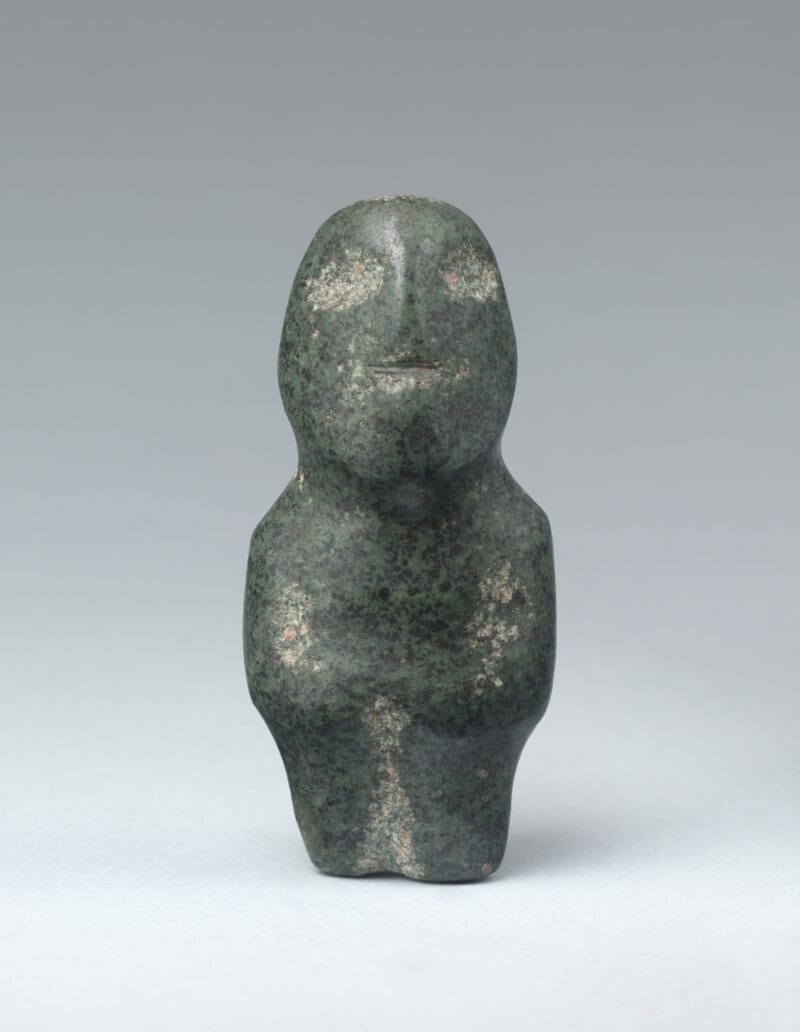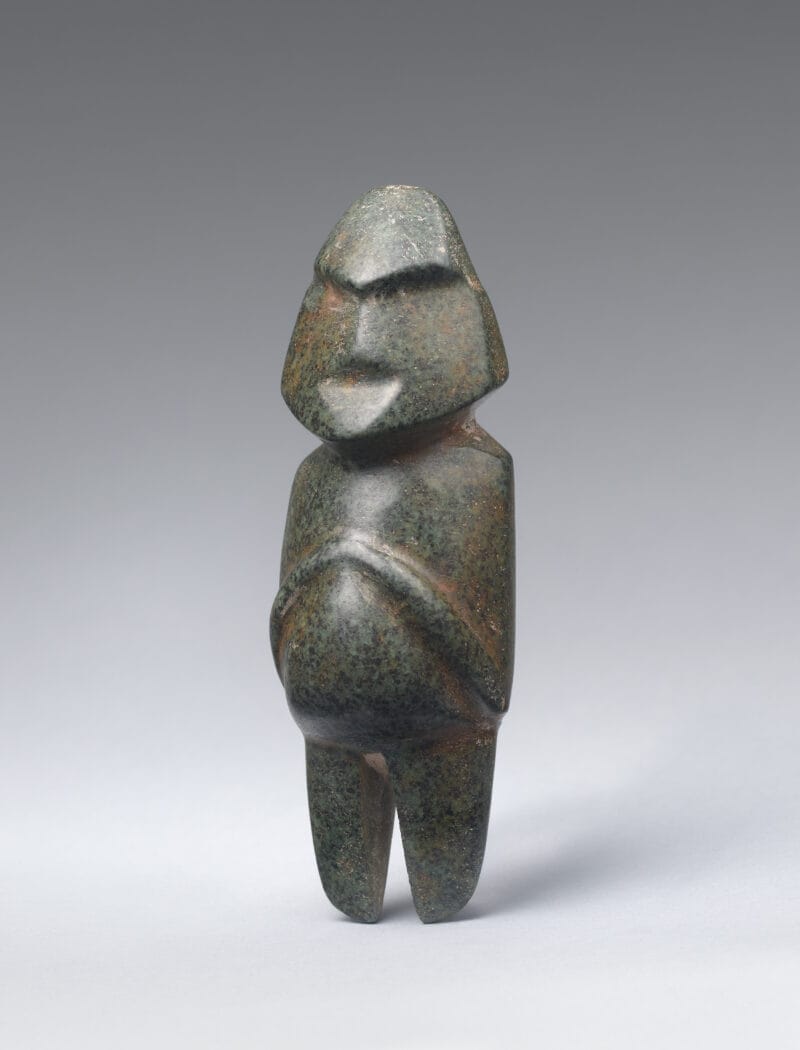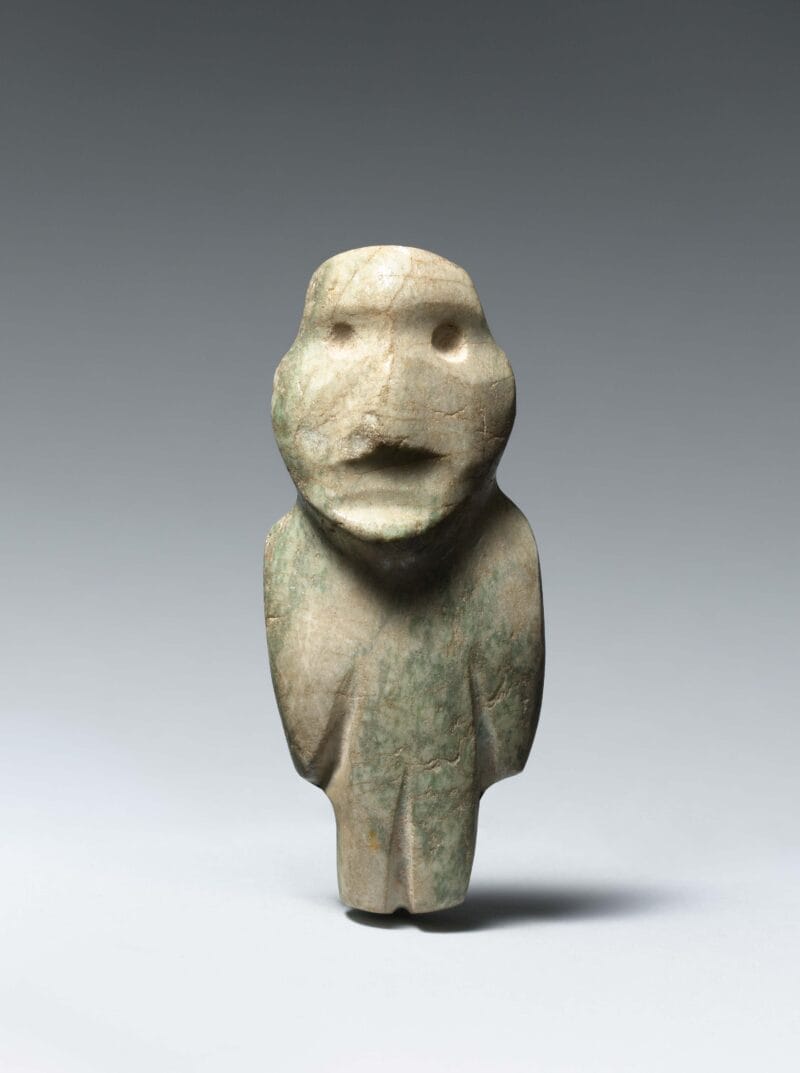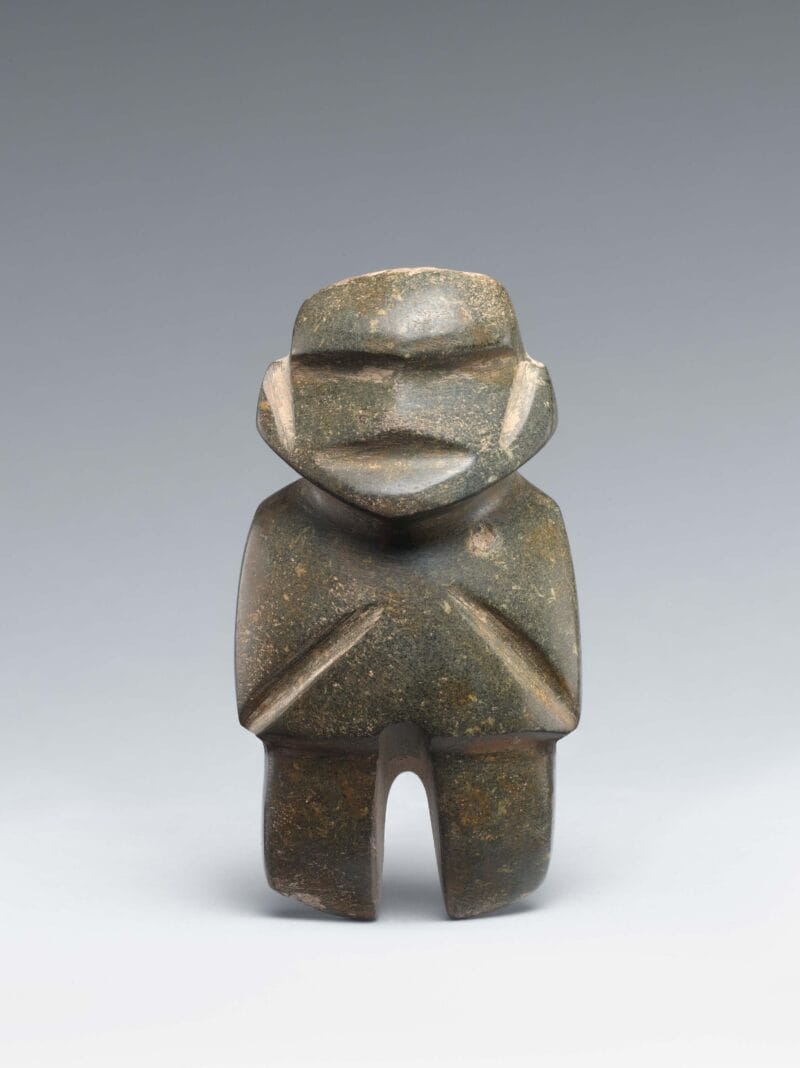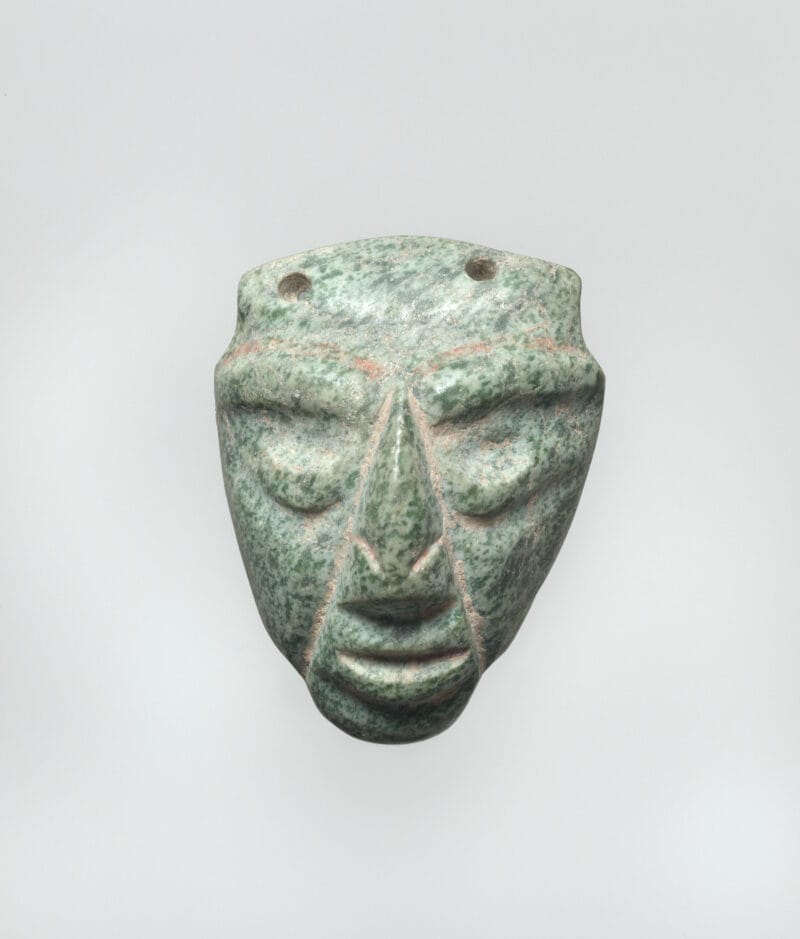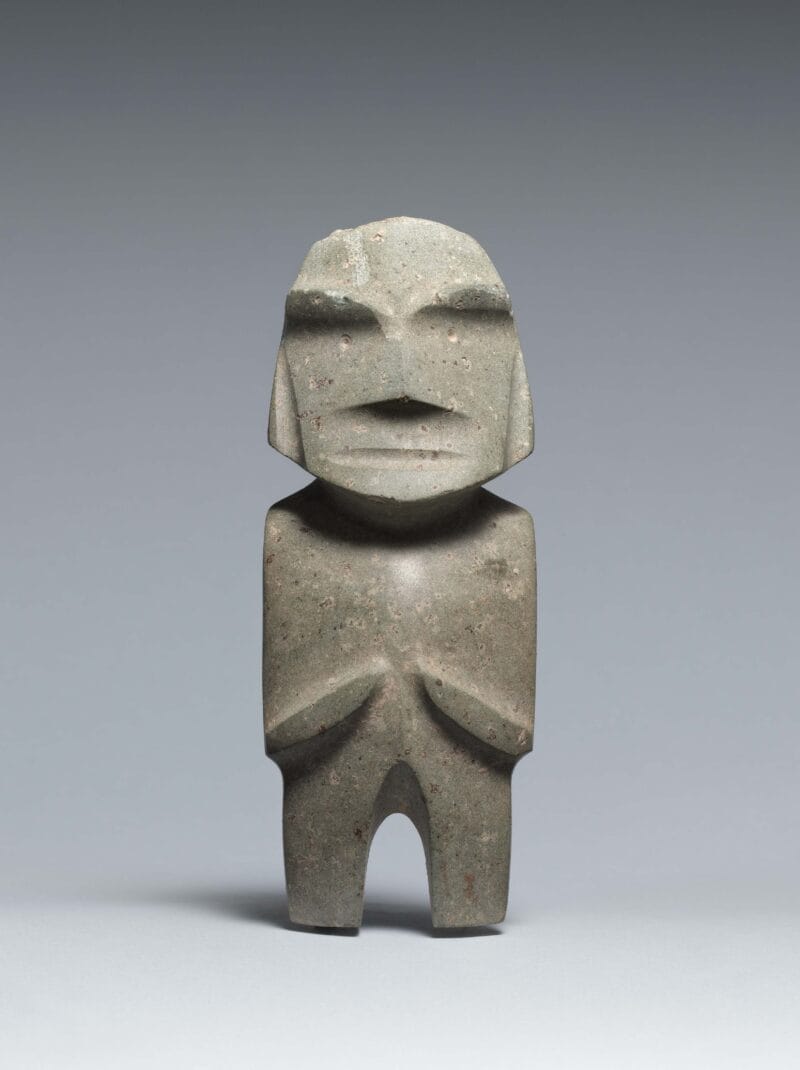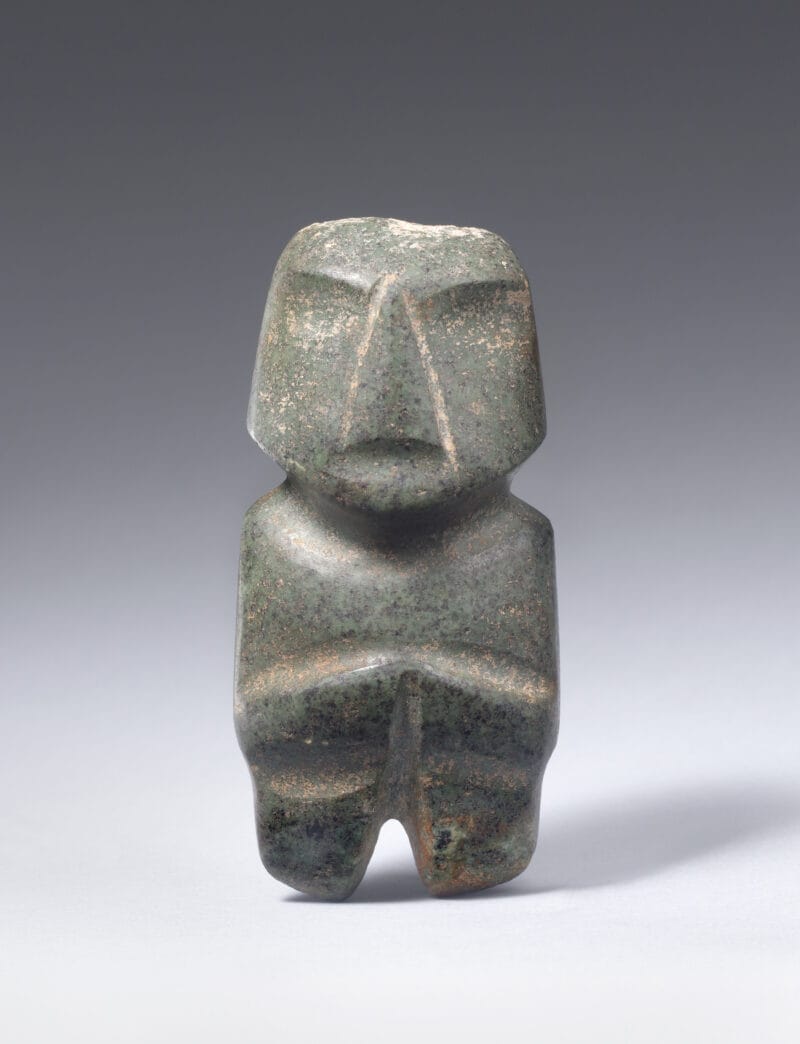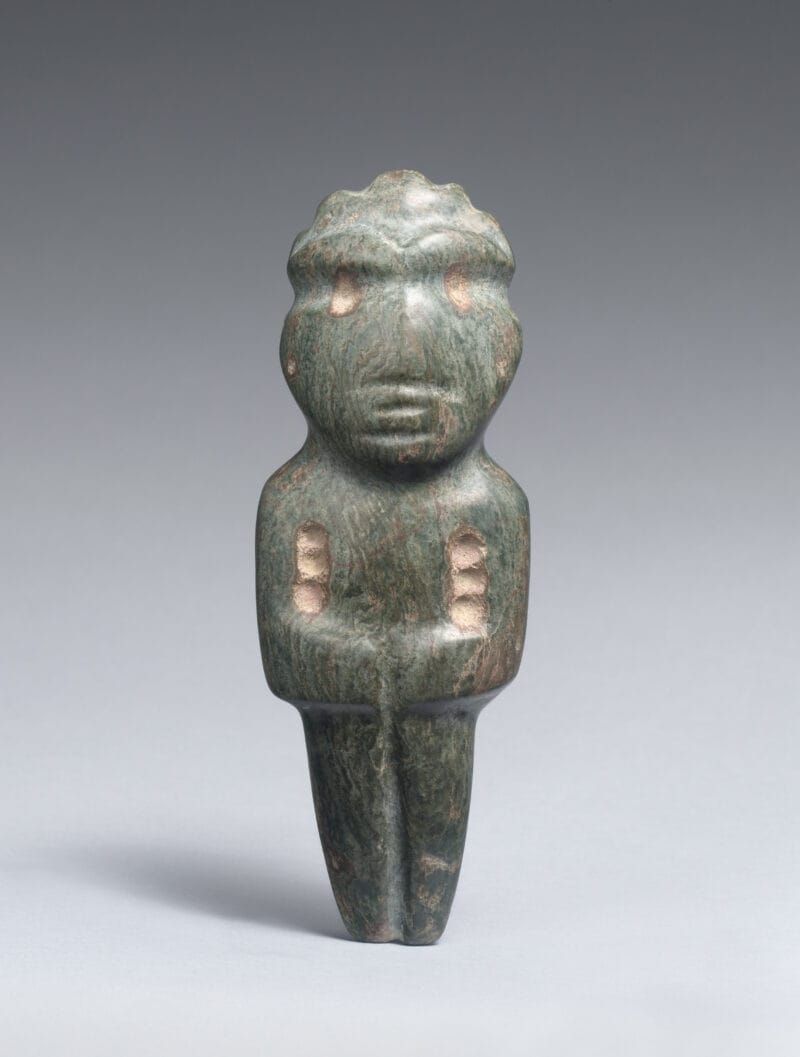
About the Object
Mezcala-Chontal standing figures often appear in an elongated and oblong shape, suggesting they are recycled from earlier celts, or stone hand axes. This particular figure has noticeably “pecked” arms, which may indicate the figure was never finished. This work also boasts a uniquely fashioned head, which may represent that the person is wearing a headdress. If so, headdresses in Mesoamerica revealed strict social hierarchies as particular clothing styles/materials were restricted to certain classes. This figure also reveals links to the Chontal style especially due to the long and triangular shape of the work’s nose. These elements together likely help to date the creation of this work toward the end of the Mezcala-Chontal traditions.
Additional Information
A great deal remains unknown about Mezcala-Chontal traditions originating in what is now the Mexican state of Guerrero due to a lack of archaeological excavation and analysis. However, recent work concerning these beautiful abstract forms has helped scholars generate greater knowledge about these remarkable traditions and their context within the broader Mesoamerican world. For instance, these figures were likely associated with burials or rituals linked to agricultural cycles and fertility.
Spencer Throckmorton Collection, New York, NY;
Gift to The Jan T. and Marica Vilcek Collection;
Related Objects
You may also be interested in
Graywolf Press

Juan Pablo Contreras composes classical music with the sounds of Mexico

Felipe Baeza


